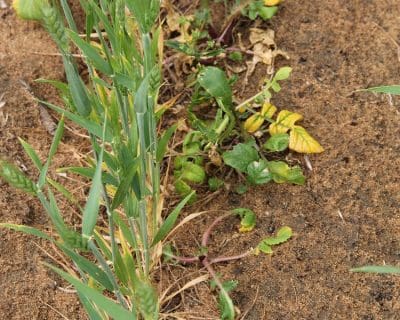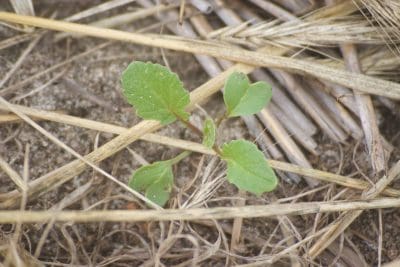WESTERN Australian growers are regaining control over herbicide resistant weeds, including wild radish, through the widespread adoption of integrated weed management systems.
Australian Herbicide Resistance Initiative communications manager, Peter Newman, said many crops were cleaner than ever and growers should be acknowledged for their consistent efforts over many years to implement a wide range of herbicide and non-herbicide tactics to drive down the weed seed bank on their farms.
“There was a serious problem here over the last two decades and growers have now made managing herbicide resistance in weeds a component in every farming system,” he said.
“We were caught once, and had to learn the hard way. Hopefully growers in other areas will be able to take advantage of the experience and research that has helped WA growers get back in the driver’s seat with weed control.”
One piece of research conducted in 2012 and 2013 has given growers additional confidence when managing herbicide resistant wild radish.
“The objective of the 2-year study was to identify paddocks that had high populations of wild radish that was resistant to several herbicide groups,” Mr Newman said.
“Although Velocity® (pyrasulfatole + bromoxynil, Group H/C) was working well in most situations, growers were aware that if there was over-reliance on the one product that soon enough that option would be gone.”
“Some growers were using two or three shots of Velocity® in a single growing season and they had little confidence in other herbicides due to their radish being multiple resistant.”
The first year trial achieved a 22 to 36 per cent yield improvement when wild radish was controlled and the researchers established that the key strategy was to spray the wild radish as early as possible while avoiding any crop damage.
“Applying Velocity at the 2-leaf stage of the wheat crop is safe for the crop and kills the majority of the small – 1 to 2 leaf stage – wild radish plants present,” he said.
“When this is followed with a second spray of a herbicide from another mode of action at the crop’s 5-leaf stage, when the radish is no bigger than 4-leaf stage, the level of control is very high even in multi-resistant wild radish populations.”
This strategy was tested on three properties in the Geraldton area in 2013 and proved very effective. Landmark/Crop Circle Consulting agronomist Grant Thompson led the trial work in 2013

Even multi-resistant wild radish plants succumb to a second herbicide spray provided the first spray is applied when the radish plants are small.
He said the result that was the most surprising was that there were many options available for use as the second spray.
The paddocks chosen for the trials all had known resistance to a wide range of herbicides from mode of action groups B, C, F and I.
“Provided the paddock was sprayed early with a product that did not damage the crop, it didn’t make much difference what herbicide was used for the second spray,” he said.
“This was a great result for growers as if gave them more opportunities to rotate modes of action across the whole rotation.”
“For example, growers may choose to use Jaguar (Group F/C) as the first spray in cereals and avoid using Velocity twice in the one season.
“Jaguar applied at 1 L/ha when the wheat is 2-leaf and the radish is 1 to 2-leaf is giving excellent control of the first cohort of weeds in most situations.”
The trials also highlighted the importance of achieving excellent coverage with each spray.
Mr Thompson stressed the importance of using the correct adjuvant, appropriate nozzles and not skimping on the water rate.
Treating the wild radish early was very important for preserving yield. Even with one early spray, all registered treatments doubled the grain yield over the nil treatment. The second spray helps achieve optimal weed control while remaining profitable.
In the two-spray system the herbicide applications cost $19 to $29 per ha and achieved a yield benefit worth an average of $90–130/ha, and as high as $260/ha in very weedy situations.
Knowing the herbicide resistance profile of the weeds present helps growers to choose the mode of action herbicide most likely to give the best results.
When followed with a harvest weed seed control tactic such as narrow windrow burning or chaff cart, the contribution of new seed to the weed seed bank can realistically be zero. Consistently applied over several seasons can see the weed population driven right down and, if there are no weeds, there are no herbicide resistant weeds.
For more information about managing herbicide resistance visit the Weedsmart website: www.weedsmart.org.au
Source: Weedsmart



HAVE YOUR SAY